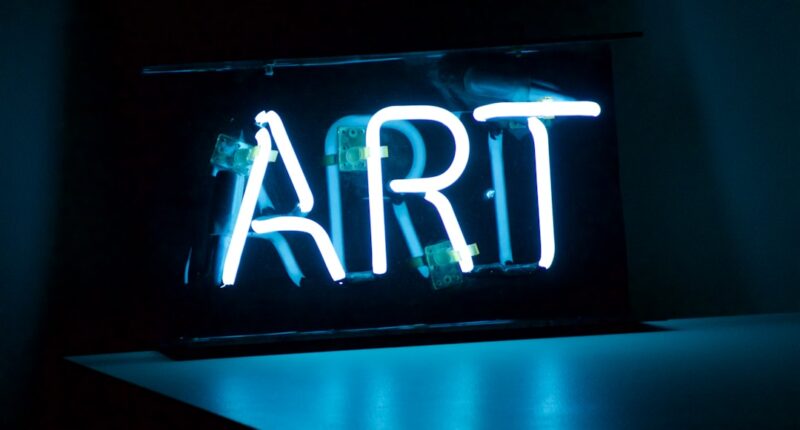Non-fungible tokens (NFTs) have taken the art world by storm in recent years, revolutionizing the way artists create, sell, and collect digital art. NFTs are unique digital assets that represent ownership or proof of authenticity of a specific item or piece of content, such as artwork, videos, music, and more, using blockchain technology. This technology allows for the creation of a digital certificate of ownership that cannot be replicated or forged, providing a level of security and authenticity that was previously difficult to achieve in the digital realm.
The rise of NFTs has opened up new opportunities for artists to monetize their digital creations in ways that were previously not possible. With NFTs, artists can sell their work directly to collectors without the need for intermediaries such as galleries or auction houses, allowing them to retain more control over their art and earn a larger share of the profits. This has led to a democratization of the art world, allowing artists from all backgrounds and disciplines to showcase and sell their work to a global audience, regardless of their physical location or connections within the traditional art market.
Key Takeaways
- NFTs are digital assets that represent ownership of unique items, and they have gained popularity in the art world as a new way for artists to sell their work.
- NFTs provide artists with a new revenue stream through the sale of digital art, allowing them to reach a global audience and receive royalties on secondary sales.
- Technology has played a significant role in the rise of NFT artists, providing platforms for creating, selling, and trading digital art, as well as ensuring the authenticity and scarcity of NFTs.
- NFT artists face challenges such as environmental concerns and copyright issues, but also have opportunities to connect directly with collectors and explore new creative possibilities.
- The impact of NFTs on the traditional art market is still evolving, with potential to democratize access to art and disrupt the traditional gallery and auction systems.
- The future of NFT artists and the art industry is likely to involve continued innovation in technology, new ways of engaging with art, and potential shifts in the art market landscape.
- Tips for artists interested in exploring NFTs include researching platforms, understanding the technology and legal implications, building a strong online presence, and engaging with the NFT community.
NFTs as a New Revenue Stream for Artists
NFTs have emerged as a new and potentially lucrative revenue stream for artists, providing them with the opportunity to generate income from their digital creations in ways that were previously not possible. By tokenizing their artwork as NFTs, artists can sell limited edition or one-of-a-kind digital pieces directly to collectors, often at significantly higher prices than they could command in the traditional art market. This has the potential to significantly increase the earning potential for artists, particularly those working in digital mediums such as digital art, animation, and virtual reality.
In addition to direct sales of NFTs, artists can also benefit from ongoing royalties each time their NFT is resold in the secondary market. This provides artists with a continuous stream of income from their work, even after the initial sale, which can provide long-term financial stability and support for their artistic practice. Furthermore, NFTs can also be used as a means of crowdfunding or patronage, allowing artists to engage directly with their audience and supporters to fund new projects or sustain their creative endeavors.
The Role of Technology in the Rise of NFT Artists
The rise of NFT artists has been closely tied to advancements in technology, particularly blockchain and cryptocurrency. Blockchain technology provides a secure and transparent way to verify ownership and authenticity of digital assets, making it an ideal platform for creating and trading NFTs. The decentralized nature of blockchain also allows for peer-to-peer transactions without the need for intermediaries, providing artists with greater control over the sale and distribution of their work.
Cryptocurrency has also played a significant role in the rise of NFT artists, as it provides a means of exchange for buying and selling NFTs. Many NFT marketplaces and platforms accept cryptocurrency as payment for NFTs, allowing collectors to easily purchase digital artwork using digital currencies such as Bitcoin or Ethereum. This has opened up new possibilities for artists to reach a global audience of collectors who are familiar with and comfortable using cryptocurrency as a means of investment and transaction.
Challenges and Opportunities for NFT Artists
| Challenges | Opportunities |
|---|---|
| High competition in the NFT market | Ability to reach a global audience |
| Difficulty in standing out among other NFT artists | Potential for increased visibility through social media and online platforms |
| Uncertainty about copyright and intellectual property rights | Possibility to explore new revenue streams through NFT sales |
| Technical challenges in creating and minting NFTs | Access to decentralized marketplaces for selling digital artwork |
While NFTs present exciting opportunities for artists, they also come with their own set of challenges. One of the main challenges for NFT artists is navigating the complex and rapidly evolving landscape of blockchain technology and cryptocurrency. Many artists may not have prior experience with these technologies and may require additional support and resources to understand how to create, sell, and manage NFTs effectively.
Another challenge for NFT artists is the environmental impact of blockchain technology, particularly in relation to the energy consumption required for mining cryptocurrencies and processing transactions on the blockchain. As the demand for NFTs continues to grow, there is a need for sustainable solutions to mitigate the environmental impact of NFT creation and trading.
Despite these challenges, there are also numerous opportunities for NFT artists to thrive in this new digital art market. The ability to reach a global audience of collectors, bypass traditional gatekeepers in the art world, and earn ongoing royalties from secondary sales all present exciting prospects for artists looking to establish themselves in the NFT space.
The Impact of NFTs on the Traditional Art Market
The rise of NFTs has had a significant impact on the traditional art market, challenging established norms and practices within the industry. NFTs have disrupted the traditional gallery and auction house model by providing artists with a direct route to market and collectors with a new way to invest in art. This has led to a shift in power dynamics within the art world, with artists gaining more control over their work and collectors having greater access to a diverse range of digital art.
The rise of NFTs has also sparked conversations about the value and legitimacy of digital art within the broader art market. As more collectors and institutions begin to recognize and invest in digital art through NFTs, there is a growing acceptance of digital art as a legitimate and valuable form of artistic expression. This has the potential to reshape the art market by expanding the definition of what constitutes collectible and valuable artwork.
The Future of NFT Artists and the Art Industry

The future looks bright for NFT artists as they continue to push boundaries and explore new possibilities within the digital art space. As technology continues to evolve, we can expect to see even more innovative ways for artists to create and sell NFTs, including advancements in virtual reality, augmented reality, and interactive media. This will open up new avenues for artistic expression and engagement with audiences, further blurring the lines between physical and digital art.
In addition to technological advancements, we can also anticipate further integration of NFTs into mainstream culture and commerce. As more industries begin to explore the potential of NFTs for tokenizing various assets and experiences, there will be increased opportunities for artists to collaborate on unique projects that extend beyond traditional art forms. This could include partnerships with brands, entertainment companies, and other cultural institutions seeking to leverage NFTs as a means of engaging with their audiences in new and exciting ways.
Tips for Artists Interested in Exploring NFTs
For artists interested in exploring the world of NFTs, there are several key tips to keep in mind. Firstly, it’s important to take the time to educate yourself about blockchain technology and cryptocurrency to understand how NFTs work and how they can benefit your artistic practice. There are numerous resources available online, including tutorials, forums, and communities dedicated to helping artists navigate the world of NFTs.
Secondly, it’s essential to carefully consider how you present your work as an NFT. This includes thinking about the rarity and exclusivity of your digital creations, as well as how you communicate the value and story behind your artwork to potential collectors. Building a strong narrative around your NFTs can help attract interest from collectors and differentiate your work in a crowded marketplace.
Finally, it’s important to approach the world of NFTs with an open mind and a willingness to experiment. The landscape of digital art and NFTs is constantly evolving, so being adaptable and open to new opportunities will be key to success as an NFT artist. By staying informed, being creative, and engaging with the community, artists can position themselves for success in this exciting new frontier of the art world.
Looking to break into the world of NFT art? Check out this insightful article on NFT-Jobs.com that provides valuable tips and resources for aspiring NFT artists. Whether you’re a seasoned artist looking to explore the digital art space or a newcomer eager to learn more about the NFT industry, this article offers practical advice and guidance to help you navigate the exciting world of non-fungible tokens. Dive into the article here and discover how you can carve out a successful career as an NFT artist.
FAQs
What is an NFT artist job?
An NFT artist job involves creating digital artwork that is then tokenized and sold as non-fungible tokens (NFTs) on blockchain platforms.
What does an NFT artist do?
An NFT artist creates digital artwork, such as illustrations, animations, or 3D models, and then tokenizes them as NFTs for sale on NFT marketplaces.
How does an NFT artist make money?
An NFT artist makes money by selling their tokenized artwork as NFTs on blockchain platforms. They typically receive a percentage of the sales as royalties.
What skills are required to become an NFT artist?
Skills required to become an NFT artist include proficiency in digital art creation, knowledge of blockchain technology and NFT marketplaces, and an understanding of cryptocurrency transactions.
Where can NFT artists sell their artwork?
NFT artists can sell their artwork on various NFT marketplaces, such as OpenSea, Rarible, and Foundation, as well as through online auctions and direct sales.
Is being an NFT artist a viable career option?
Being an NFT artist can be a viable career option for those with a talent for digital art and an understanding of blockchain technology. However, the NFT market can be volatile, so success is not guaranteed.





